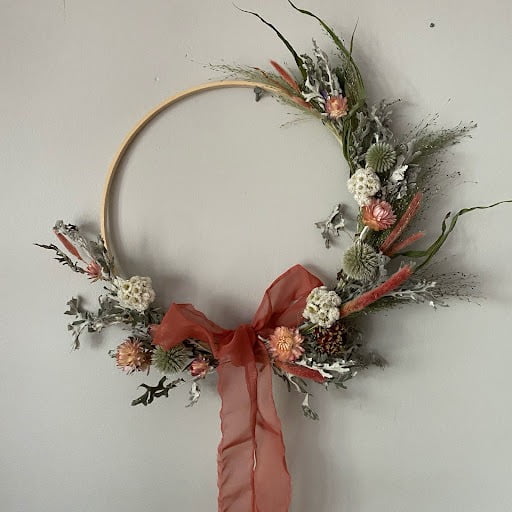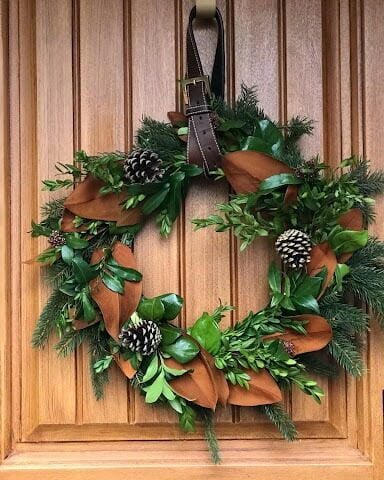So far in my chosen work, sharing the joy of flowers has got to be…

Say it with Flowers: The Art of Floriography with Twiggage & Bloom
Discovering a Different Kind of Poetry
I never liked poetry. When reading poems, I don’t always get it; they just look like a curiously balanced jumble of words to me. Additionally, I don’t like writing poems because I find the process clunky and awkward, often missing the mark of what I’m feeling and truly wanting to express. I experience frustration with the constraints of rhythm and rhyme, a set of ‘rules’ that I don’t intuitively feel. However, as a kid, there was one jumble of words I did enjoy: decoding an encrypted spy message using a cipher ring or wheel. It felt like a superpower!
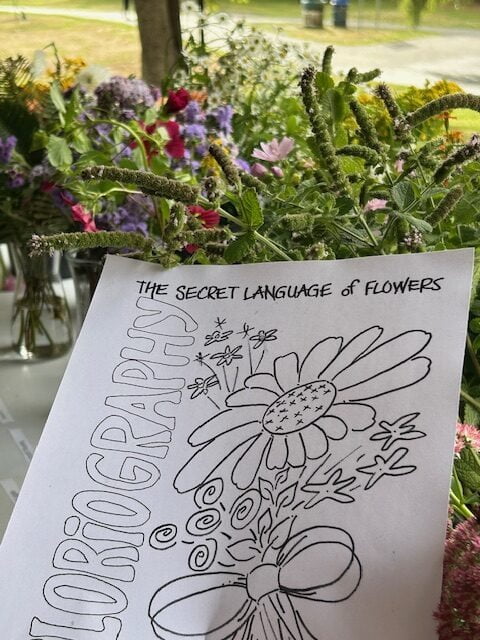
The Discovery of Floriography
Then I discovered Floriography, essentially a decoder using flowers. This clever concept from Victorian times allowed people to express their feelings discreetly in an era when societal restraints didn’t always permit open expression. Even today, we all can relate to sending flowers to convey our love, condolences, joy, or sentiments when words feel awkward or inadequate. Chances are the receiver will get the message, and we all understand what a dozen red roses convey.
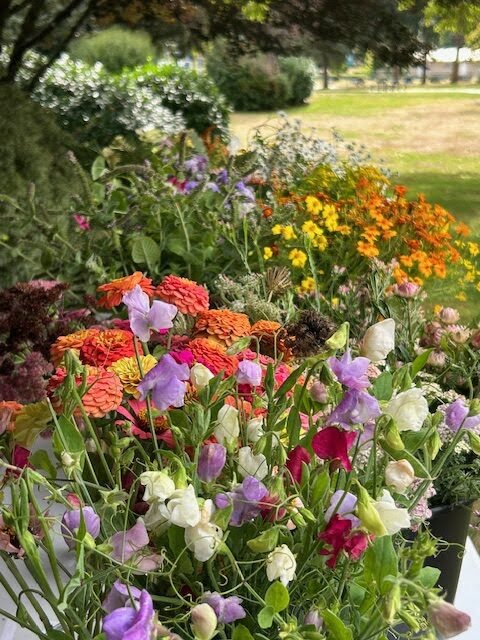
Modernizing the Language of Flowers
Traditional Victorian floriography has seen a bit of a resurgence and modernization, as the varieties and trends in current blooms have evolved. With globalization and the mashup of cultures, we have the opportunity to create our own cipher. In my research, I quickly discovered there is no universal list for floriography, and occasionally, messages can be totally opposing. Adding cryptic nuances such as the color of the bow, how it is tied, the placement of the blooms, and more, I felt it was fair game to reinvent and make it work for me.
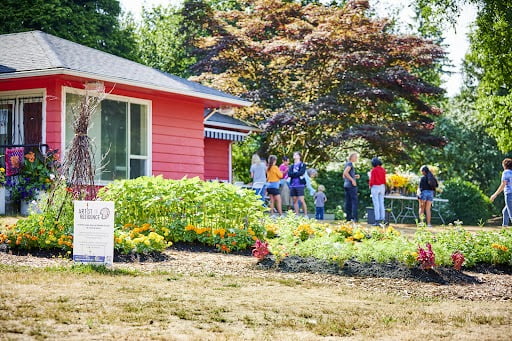
Creating Floriography Workshops
As an artist in residence with the City of Abbotsford, curating a season of flower-related workshops was a dream come true. I wanted to introduce the concept of floriography in a way that was engaging and meaningful. Simply creating poems out of reference material felt a little dry, and creating bouquets to be taken home felt fleeting. However, combining the two felt fabulous. I also wanted the host art gallery to gain an asset by amassing a digital anthology in the process. Being a barrier-free program open to the public in the summer, my challenge was to make this affordable, accessible, and appropriate for all (a dozen red roses wouldn’t cut it).
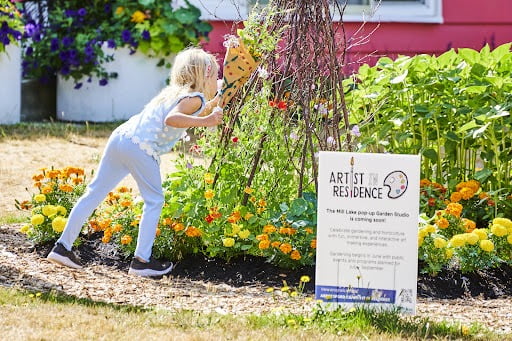
Growing a Demonstration Cutting Garden
In this residency, we also grew a demonstration cutting garden featuring easy-to-grow blooms for this region and climate. As a farmer-florist, in my micro farm cutting garden, I have focused on those cottage beauties that are harder to find commercially. So, the resulting ‘cheat sheet’ or floriography list is created based on what can be grown here in high summer. I edited the definitions to always choose the positive message (some held conflicting meanings!) and the phrases played well together. To narrow it further, I didn’t include flowers that represented any ‘big feels’ like unrequited love. Finally, I converted the definitions into phrases so that the poems would flow seamlessly. For example, mint had several meanings, but I chose the definition of ‘warmth’ and created the phrase: “with a warm fuzzy feeling”. This made it impossible to mess up, and everyone could participate from the non-verbal special needs person to the skilled artist.
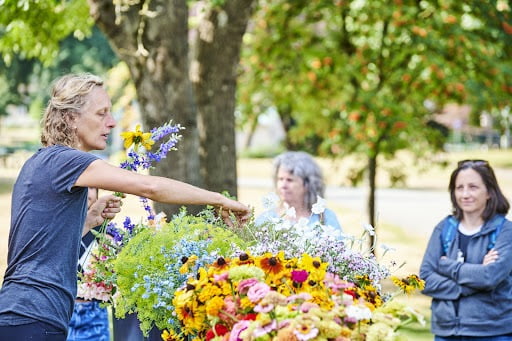
The Workshop Experience
Following a demonstration, participants received their ‘decoder’ sheet: an alphabetical list of 20 varieties and their assigned phrases. The buckets of blooms were set out in a linear flower bar (alphabetically). The creation process could go either way: first by selecting the phrases and then searching out the flowers, or by intuitively picking out the blooms and composing a complimentary poem for them. Participants were given a cardstock template (framed with branding) and could either create the poem by cutting out the phrases ‘ransom note style’ or handwritten (from primary school printing to elegant cursive writing). Fun riffs could be introduced, such as repeating a phrase throughout the poem, equal to the number of stems of that cultivar in the bouquet. The variety of poetic expression was boundless, from prescriptive to concrete poems, to freeform, to employing ChatGPT to generate the poem.
Documenting the Creations
To curate a digital anthology, we set up a photobooth near the window for good flat lay lighting and immediately documented each creation (posy and poem together). Participants could then wrap the posies and either take them home or share them with someone special. Viewing the anthology, you can see how varied the bouquets are, despite seemingly tight parameters. This workshop could easily be replicated and curated depending on what blooms you have available (even as few as five varieties could create some nifty posies and poems).
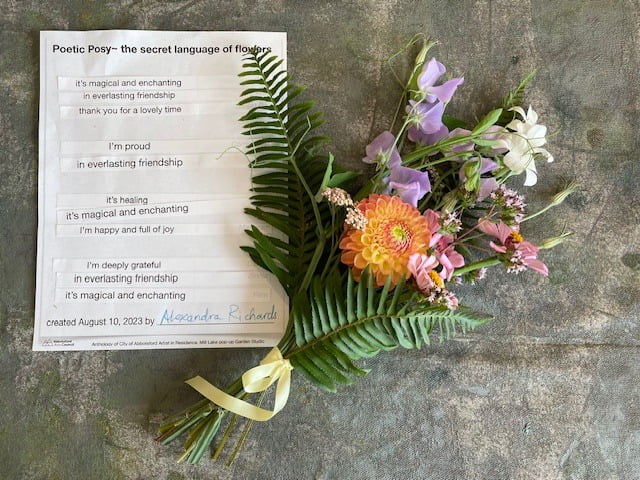
Ensuring Workshop Success
With solid preparation of materials, tools, and stations, the process made a two-hour workshop accessible, feasible, and successful. Witnessing the creative process in others, especially when there’s a dose of doubt, is so rewarding. The natural beauty of the flowers makes it easy, and the words just flow! It even gave me, a professed non-poet, the confidence to create a lovely heartfelt poem!
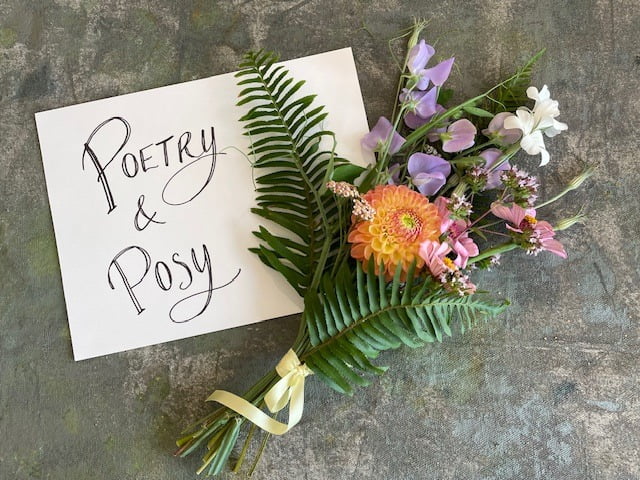
Explore Our Digital Anthology
Discover the variety and creativity of our workshop participants by viewing our online anthology, hosted by the Kariton Art Gallery and Abbotsford Arts Council. Each entry is a testament to the timeless beauty of flowers and the power of poetic expression.

